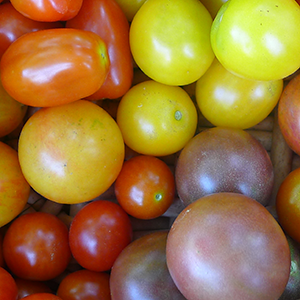
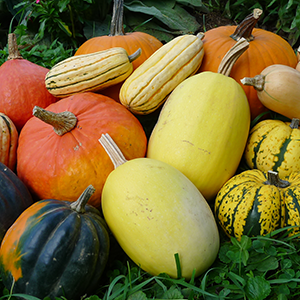
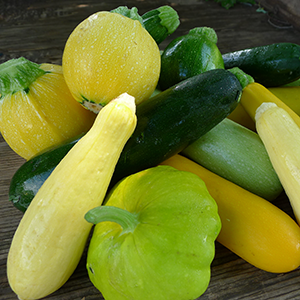

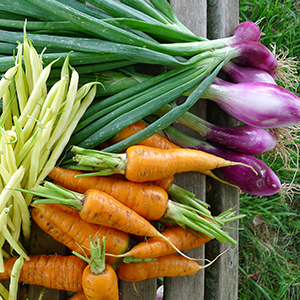
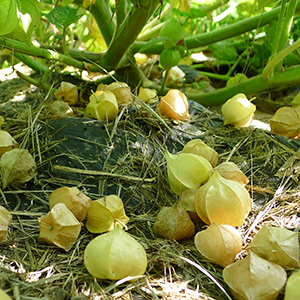
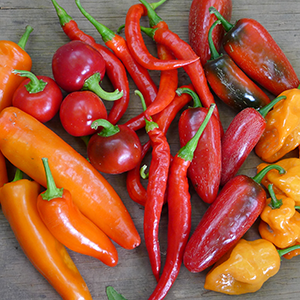



Chili Peppers
Chili peppers and their various cultivars originate in the Americas; they are now grown around the world because they are widely used as spices or vegetables in cuisine, and as medicine. The fruit of the Chili pepper is eaten raw or cooked for its fiery hot flavour which is concentrated along the top of the pod. The stem end of the pod has most of the glands that produce the capsaicin. The white flesh, that surrounds the seeds, contains the highest concentrations of capsaicin. Removing the seeds and inner membranes is thus effective at reducing the heat of a pod.
Red chilis contain high amounts of vitamin C and carotene("provitamin A"). Yellow and especially green chilis (which are essentially unripe fruit) contain a considerably lower amount of both substances. In addition, peppers are a good source of most B vitamins and vitamin B6 in particular. They are very high in potassium and high in magnesium and iron. Their high vitamin C content can also substantially increase the uptake of non-heme iron from other ingredients in a meal, such as beans and greens.
Storing / Preserving:
Store chili peppers in the crisper part of your refrigerator for up to 10 days. A plastic bag helps keep them from wilting.
Preparation / Use Suggestions:
Try different cuisines that feature hot peppers, including Thai, Korean, Chinese, Vietnamese, and of course, Mexican.
Chili peppers are used around the world to make dried spices and a wide variety of sauces, known as hot sauce, chili sauce or pepper sauce. There are countless recipes.Add minced chili peppers to many dishes to add another dimension to the dish. I often add them to both hot and cold pasta dishes; frittatas; salsas; soups such as gazpacho; dips; stir fries.

